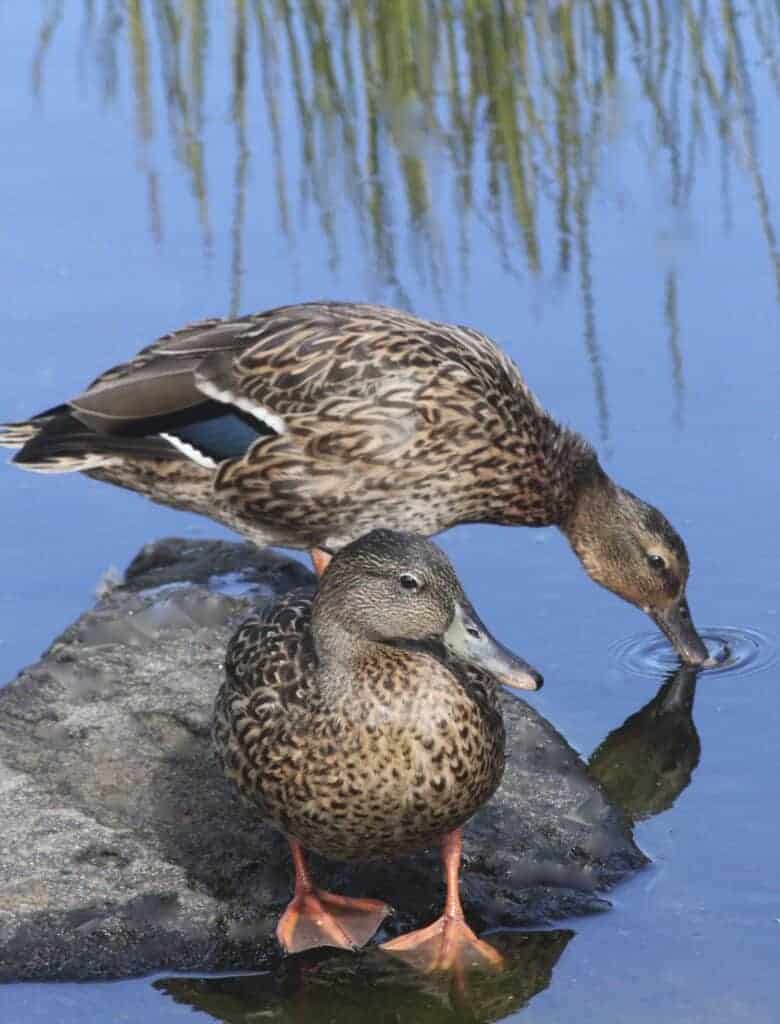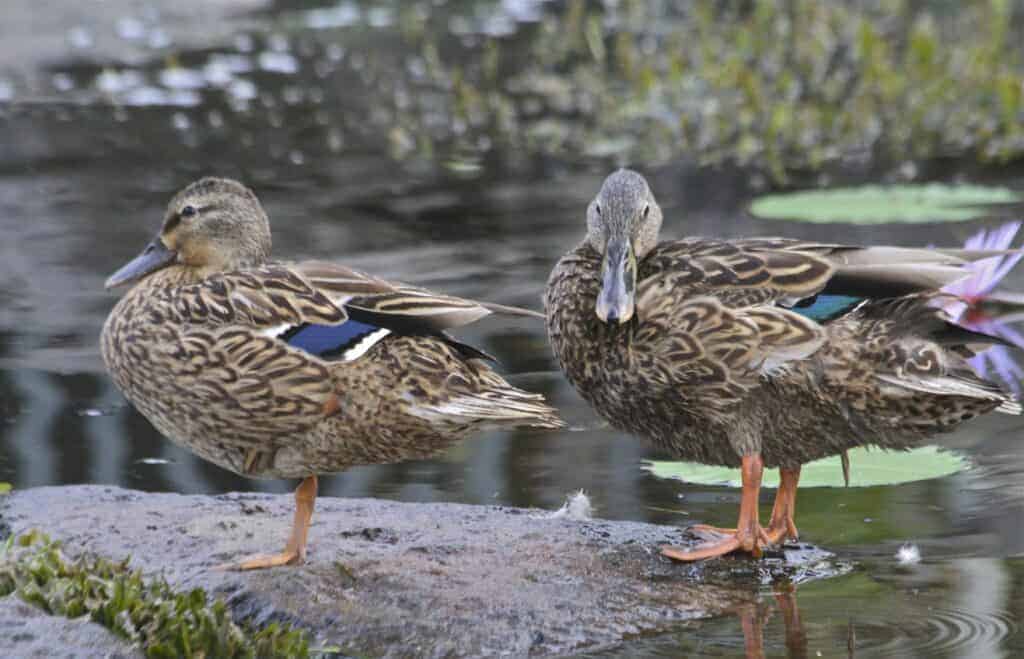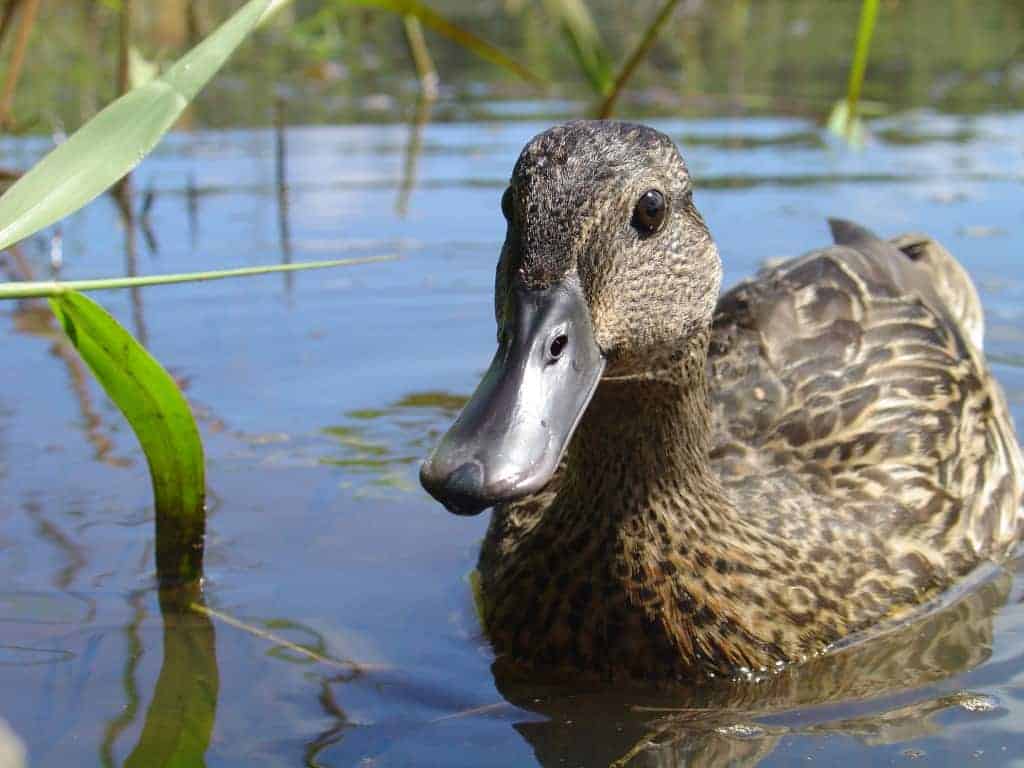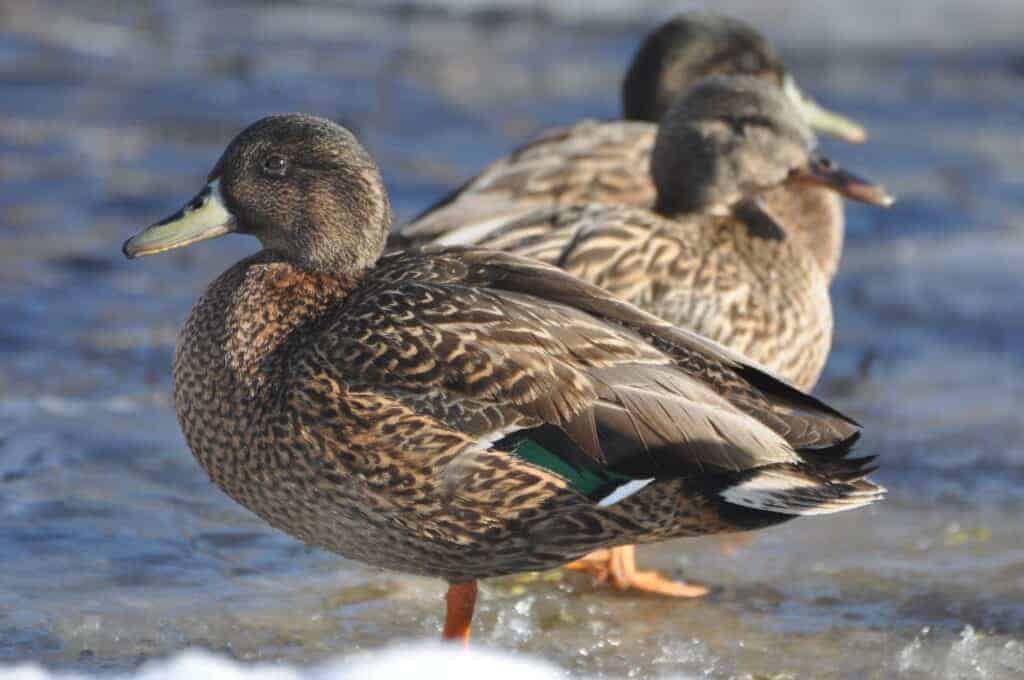Hawaiian Duck

The Hawaiian Duck is very closely related to Mallard. Significant differences are smaller size, a pale eye ring, mottled tail, and darker overall appearance.
Like many native ducks worldwide, they are threatened by hybridisation with feral Mallard.

Anas wyvilliana
The only pure populations of wild Hawaiian Ducks would appear to be on Kauaʻi, and possibly some holding on in Kohala. The local name for this species is Koloa Maoli, meaning “native duck”. Despite the population declines they have experienced, there is still very high genetic diversity and it is hoped that if Koloa numbers are high enough they will maintain pure populations once again. Read more about hybridisation here.
Unlike Hawai’i’s best-known endemic, the Hawaiian Goose or Nēnē, the Hawaiian Duck is relatively little known. Once thought to be a race of the Mallard, this small brown duck formerly occurred on all the Hawaiian islands except Lanai and Kaho’olawe, but over-hunting, loss of habitat and the introduction of the mongoose led to local extinctions. Today the duck’s stronghold is on Kaua’i, but reintroduced populations can be found on Maui, O’ahu and Hawai’i. It is listed as Endangered.

Koloa Maoli have been a part of the ecosystem of the Hawai’ian archipelago for tens of thousands of years. It is endemic to these remote islands — found nowhere else. Like many island species it is threatened with extinction not only by hybridisation, but from the combined forces of habitat loss, introduced predators and historic overhunting.
Shy and secretive, Koloa Maoli are known to take a wide variety of food including snails, earthworms, dragonflies, algae and a variety of wetland plants. They are frequently seen feeding in kalo fields.

ʻUmialīloa’s Story
The Hawaiian Duck has its place in the folklore and legends of Hawai’i, and is said to have been a guide to ʻĪmaikalani, a fierce blind warrior chief. When ʻĪmaikalani went into battle, the ducks would alert him to the presence of his enemies, quacking to indicate their location. The warrior chief would unleash a volley of ten spears, five from each hand, which the Koloa Maoli would guide to their target — a deadly battery of such power that it is said that no man could evade their horror. In the early 1500s, ʻUmialīloa (ʻUmi) consolidated his reign by killing off other chiefs to become the sole ruler of Hawai‘i Island. His warrior said “To kill ʻĪmaikalani, you must first kill the Koloa…who are ʻĪmaikalani’s guards and who give him warning of the approach of any person. Kill the birds…then you will be able to kill ʻĪmaikalani. That is how I was able to kill him.”

The Hawaiian Duck’s breeding biology is similar to that of the Mallard. Although some nest year-round, the primary breeding season is from December to May in the wild. 6–13 eggs are laid in a well concealed nest, lined with down and breast feathers. Incubation is exclusively by the duck and takes around 28 days. The young take to water soon after hatching, but will take a further nine weeks to fledge.
Though widely kept in captivity, the lack of showy plumage and the Hawaiian Duck’s tendency to hybridise with its congeners restricts its popularity.
Share this page